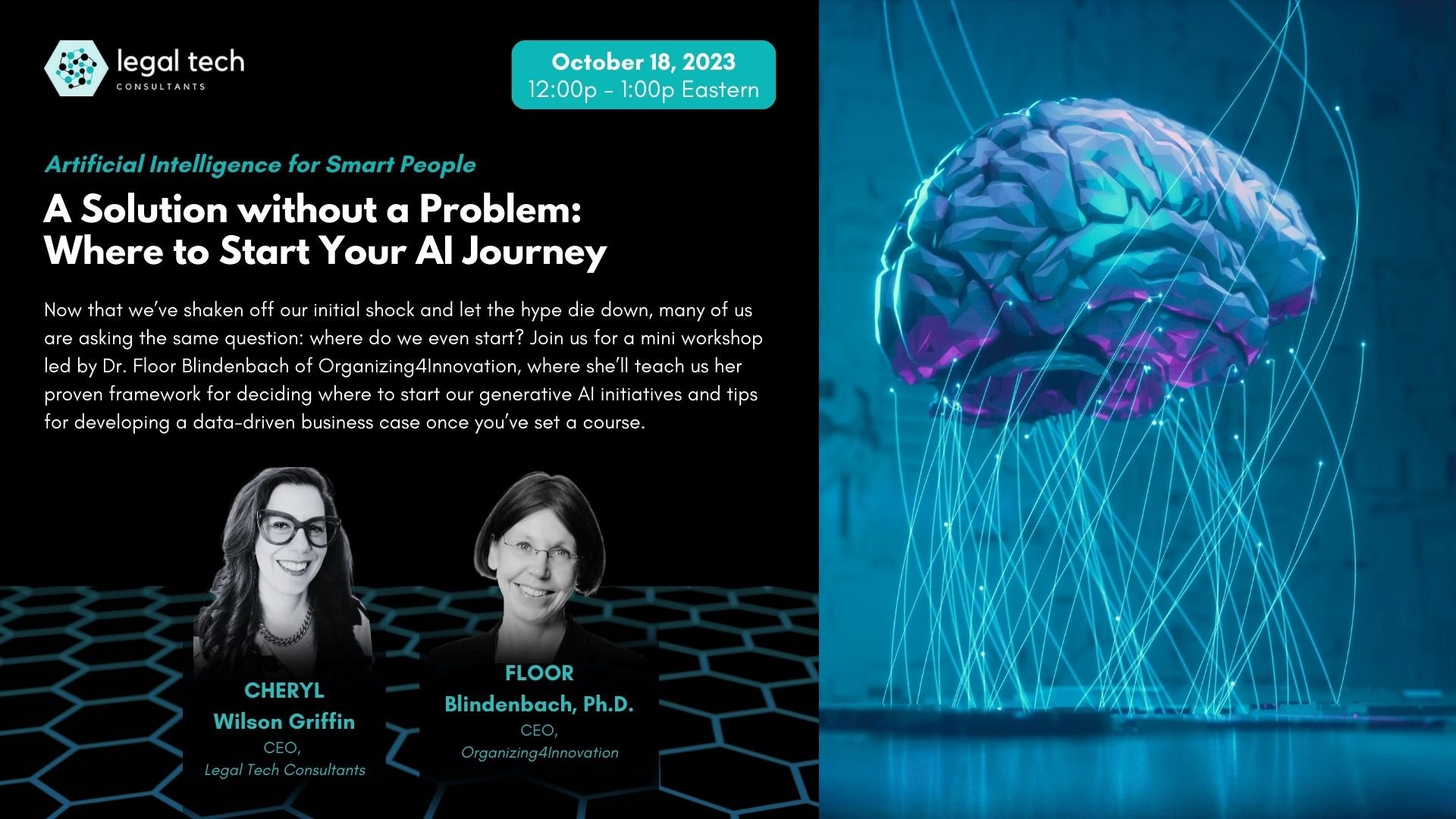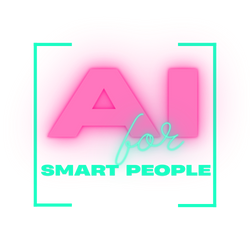Artificial Intelligence: A Solution in Search of a Problem

As someone who’s spent her entire adult life trying to convince lawyers to spend money and change, there’s no one who appreciates the unbridled exuberance with which many in the legal industry have embraced the latest advancements in artificial intelligence. Though informal surveys from organizations like SKILLS.law seem to confirm that most are taking a more conservative approach, several firms (and not necessarily those you’d expect) have invested more than $1 million in a single AI platform. And, as expected, the whispers are that adoption was extraordinary in the first few weeks and is now at rock bottom levels for many of these early adopter firms.
Is that because the tech they’ve invested in isn’t good?
I’d suggest a more likely explanation is that the platform was purchased and implemented with no specific problem in mind. It was a solution in search of a problem.
If You Build It, They Will Come
In the 1989 American sports film, Kevin Costner portrays a farmer about to lose the family farm who receives a mysterious message that, “If you build it, he will come.” Eventually, he realizes that the voice is telling him that he needs to plow over the last of his failing crops to build a baseball field. Crazy, right? In the movie, his faith is rewarded with a last game of catch with the ghost of his deceased father on that field. In the business world, this level of faith is rarely rewarded.
There’s no other place in your professional or personal life where you buy something – an expensive something, at that – and say, I’m sure we’ll figure out what to do with it. First generation AI products are not the place to start that practice.
In my recent interview with Dr. Floor Blindenbach of Organizing4Innovation, she shared with us the results of her Ph.D. research on innovation. She found that the most successful innovation initiatives have three things in common:
- They fulfill a clear business need.
- They’re point solutions that solve a specific, often narrow, problem.
- They have motivated participants who are eager to try a new approach.
In a cruel twist of fate, she also found that most Generative AI projects have quite the opposite characteristics: they set out to be comprehensive, lack a clear business need, and have apathetic participants (i.e., lawyers aren’t breaking the doors down to use it).
Choose Points Solutions over Big Bold Initiatives
Is there anything sexier or more exciting than a big, bold initiative?
We’re going to change the way law is practiced. Yes! We’re going to use AI to kill the billable hour. Wonderful!
These are worthy projects that could have a big impact on both your organization and the industry. But they require substantial resources, including financial investment, personnel, expertise, and sometimes external consultants or vendors, and have significant potential for delays, budget overruns, scope creep, and strategic misalignment. More significantly, they have far-reaching and sometimes unforeseen impacts across the organization that may force you to make more expansive changes to additional areas of the business.
They’re sexy because they’re inherently high risk.
If you’re wondering how we get groundbreaking innovations like the iPhone or quantum computer without big, bold innovation initiatives, you’re asking the right question. Big, bold initiatives are the primary driver of the success of companies like Google and Apple. So, why the difference in recommended approach to innovation? Simply put, their few successful projects earn them enough profit to make up for the resources they spend on the many failed initiatives.
Think about the size of the market for companies like Google and Apple. For mobile ads alone, Apple has a Total Addressable Market of $450 billion – that is, the revenue opportunity to Apple in that single market is $450 billion. In contrast, Kirkland & Ellis, the highest earning US firm in 2022 reported $6.5 billion in gross revenues. Even a firm the size of Kirkland would have a hard time making a single big initiative earn enough to make up for what they’d spend on a bunch of big, failed initiatives. The legal market just isn’t large enough to support that type of gambling. And if you’re in corporate legal where you’re seen as a cost center, there’s no universe where big and bold pays off.
That’s why focused, point solutions are the only sensible way for legal to approach AI initiatives. They’re simpler to design, implement, and manage and have shorter timelines and require fewer resources. And this means they’re perfect for booking an early success.
The other great thing about staying focused on point solutions? They’re “stackable.” Let’s say your first project improved the way litigators in your firm work. There are probably some learnings (and maybe even work) from that project which can be directly applied to the transactional practice with little risk because you’ve already proven they work. Each successful point solution informs and supports the next. It’s like a snowball of wins. And who doesn’t want that?
Identify Projects Using an Opportunistic, Not Top-Down Approach
One of the easiest ways to ensure an innovation efforts success, AI or otherwise, is to pick a project that has ‘motivated participants.’ But what exactly does that mean? Who are these participants we speak of? In the case of legal, your ‘motivated participants’ are usually lawyers. They are the people whose problem you’re solving and whose lives you’re making better.
So where do you find these motivated users for your project? Wrong question entirely.
Instead, look for projects and initiatives that arise from your lawyer ranks organically. Is there a group of lawyers who’ve manufactured a way of tracking something really painful in Excel? Is there a practice who’s identified a new market opportunity with one client that would allow them to build a new client offering and revenue stream? These are participants who are motivated not by firm pressure or by being assigned to the AI committee, but by an intrinsic desire to try a different approach.
Selecting ideas and projects that emerge organically from your lawyer and employee population not only increases the chances the project will succeed, but it also encourages a culture of innovation throughout the organization. Called the Opportunistic Approach, it allows innovation to arise from unexpected opportunities. While an inherently riskier approach than the more traditional top-down approach where innovation is strictly aligned to the overall business strategy, the opportunistic approach requires less upfront investment and allows you to act on new ideas quickly. And in a time where the tech is changing week to week, projects that are planned a year in advance may be outdated before they ever start.
Want to Learn More?
I’m hosting an ongoing series called AI for Smart People designed to send you into 2024 with all the knowledge you need to make good decisions for your organization. Join us live on Wednesday afternoons or watch the recorded sessions on the Legal Tech Consultants YouTube channel.

Watch “A Solution without a Problem: Where to Start Your AI Journey,” featuring Dr. Floor Blindenbach of Organizing4Innovation.
Remember when the idea of artificial intelligence creating digital works of art sounded a little, well, bonkers? I think it was October 2022. We now live in a world where AI and advances in quantum computing make possible a boatload of new business capabilities that we’d previously dismissed as the musings of a mad scientist. Now that we’ve shaken off our initial shock and let the hype die down, many of us are asking the same question: where do we even start?
Share This Story, Choose Your Platform!
It's a newsletter so hot, that even global warming can't keep up.

Cheryl Wilson Griffin
Cheryl Wilson Griffin is a seasoned legal tech expert with experience on both the buy and sell side of legal. She holds an MBA with a concentration in the Management of Information Systems, along with prestigious CIPP/E, PMP, and ITIL certifications, providing her with a unique perspective on the intersection of law, technology, and project management. With over two decades of experience working in legal tech, Cheryl has gained invaluable insights into the challenges and opportunities faced by legal professionals in the digital era. Cheryl is the VP of Vendor Advisory at Legaltech Hub, the leading provider of insights, analysis, and know-how specifically tailored to lawyers and legal professionals.



